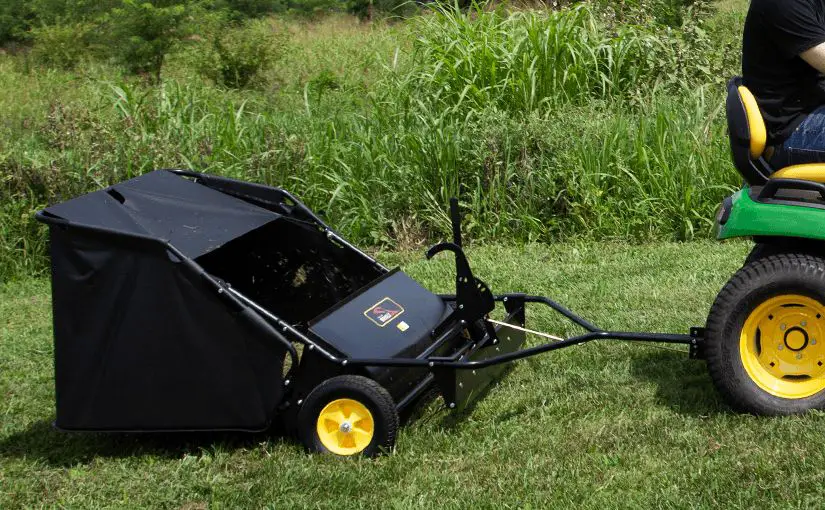A dethatcher and a lawn sweeper serve different purposes when it comes to lawn care. Here is a quick overview of how they differ:
Page Contents
What is a dethatcher?
A dethatcher is a tool used to remove thatch from lawns. Thatch is a tightly intermingled layer of dead and living stems, leaves, and roots that develops between the grass blades and the soil surface. An excessive thatch layer can prevent water, air, and nutrients from reaching the soil and grass roots. It can also lead to disease, insect damage, and unhealthy turf.
Dethatchers use tines, blades, or power rakes to rip up and remove the thatch so it can decompose. Most dethatchers are powered devices that are pushed or towed across the lawn. Using a dethatcher helps improve drainage, aeration, and fertilization of the grass.
What is a lawn sweeper?
A lawn sweeper is a tool used to collect debris from the lawn such as leaves, twigs, grass clippings, and thatch. It uses rotating brushes to sweep up debris and collects it in a bag or hopper for disposal. Lawn sweepers do not actually remove thatch from down in the turf like dethatchers do.
While lawn sweepers pick up some surface thatch, their main purpose is collecting clippings, fallen leaves, pine needles, and other yard debris that collects on top of the grass. Using a lawn sweeper keeps yards looking neat and tidy.
Key Differences Between Dethatchers and Lawn Sweepers
Here are some of the main differences between dethatchers and lawn sweepers:
- Purpose: Dethatchers remove thatch, lawn sweepers collect debris on the lawn surface.
- Depth: Dethatchers dig into the turf and remove thatch from the soil surface up. Lawn sweepers only collect what’s on top of the grass blades.
- Thatch Removal: Dethatchers actively rip up and remove matted layers of thatch so it can decompose. Lawn sweepers collect some loose surface thatch but do not tear up turf.
- When to Use: Use dethatchers when thatch buildup is excessive. Use lawn sweepers routinely to tidy up grass areas.
- Process: Dethatching is an aggressive process that tears up turf. Sweeping lightly brushes across the top of the lawn.
Using Dethatchers vs Lawn Sweepers
Here is a comparison of when and how to use dethatchers and lawn sweepers:
| Tool | When to Use | How to Use |
|---|---|---|
| Dethatcher |
|
|
| Lawn Sweeper |
|
|
Thatch Management Tips
Here are some tips for managing lawn thatch buildup:
- Dethatch in early fall or spring when grass is growing.
- Set dethatcher blades to just below the thatch layer.
- Make several passes over the lawn in different directions.
- Bag and remove dethatched debris.
- Apply compost, aeration, and overseeding to improve turf health.
- Adjust mowing height to highest setting and avoid cutting more than 1/3 grass blade.
- Apply fertilizer and irrigation judiciously to avoid excessive growth.
- Core aerate annually to improve decomposition.
Following proper mowing, watering, and fertilization practices can help prevent thatch buildup. But dethatching will still be needed periodically to remove accumulated layers and keep lawns healthy.
Conclusion
Dethatchers and lawn sweepers serve very different needs when it comes to lawn care. Dethatchers rip out matted layers of dead grass to improve soil health. Lawn sweepers lightly brush yards to collect fallen debris. Using the right tools at the right times is key to a healthy, green lawn.
